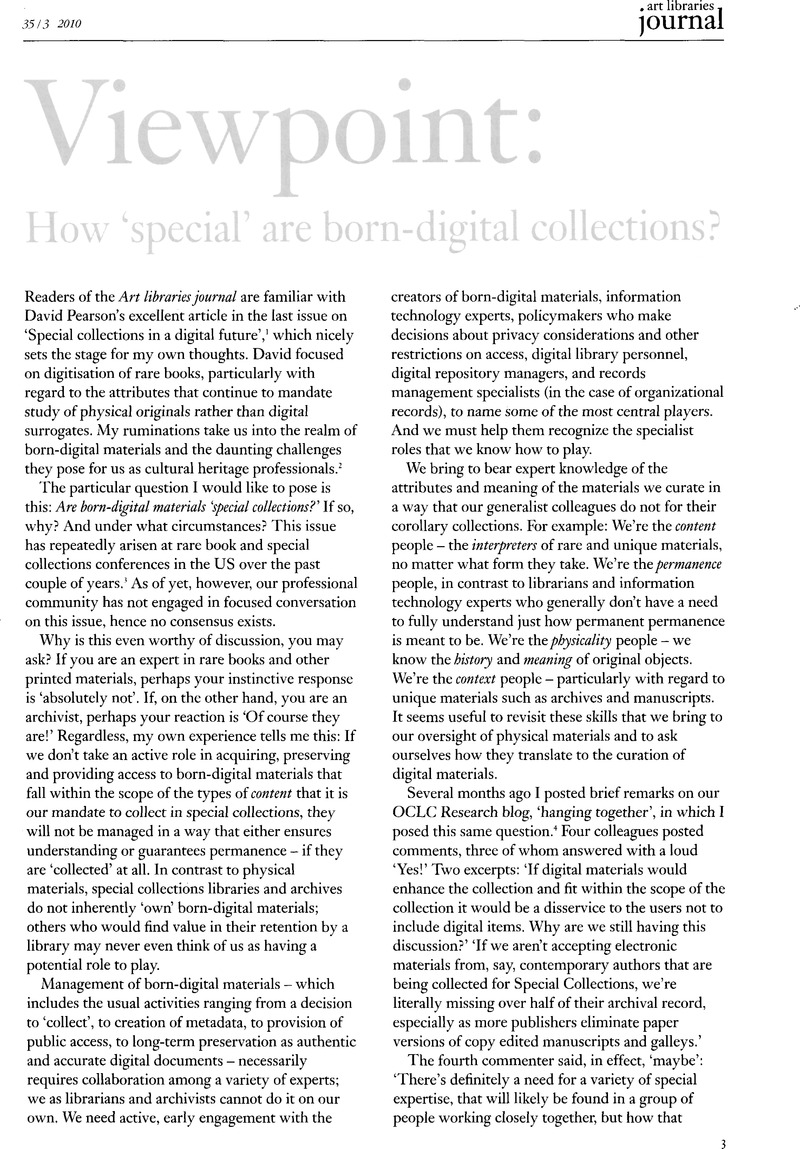No CrossRef data available.
Article contents
Viewpoint: How ‘special’ are born-digital collections?
Published online by Cambridge University Press: 06 June 2016
Abstract
An abstract is not available for this content so a preview has been provided. Please use the Get access link above for information on how to access this content.

- Type
- Other
- Information
- Copyright
- Copyright © The Art Libraries Society 2010
References
1.
Pearson, David, ‘Special collections in a digital future’, Art libraries journal
35, no. 1 (2010): 12–17.Google Scholar
2. The Digital Preservation Coalition (UK) has a good definition of ‘born digital’ that begins: ‘Digital materials which are not intended to have an analogue equivalent, either as the originating source or as a result of conversion to analogue form’ at http://www.dpconline.org/advice/introduction-definitions-and-concepts.html.Google Scholar
3. See, for example Dooley, Jackie, ‘Ten commandments for special collections librarians in the digital age,’ RBM: a journal of rare books, manuscripts, and cultural heritage
10, no.l (2009): 51–59. Originally presented at the ACRL Rare Books and Manuscripts Preconference, Los Angeles, California, 2008.Google Scholar
4.
Dooley, Jackie, ‘Do born-digital materials belong “in” special collections?’ Hangingtogether blog, entry posted on November 18, 2009, http://hangingtogether.org/Pp=751
Google Scholar


